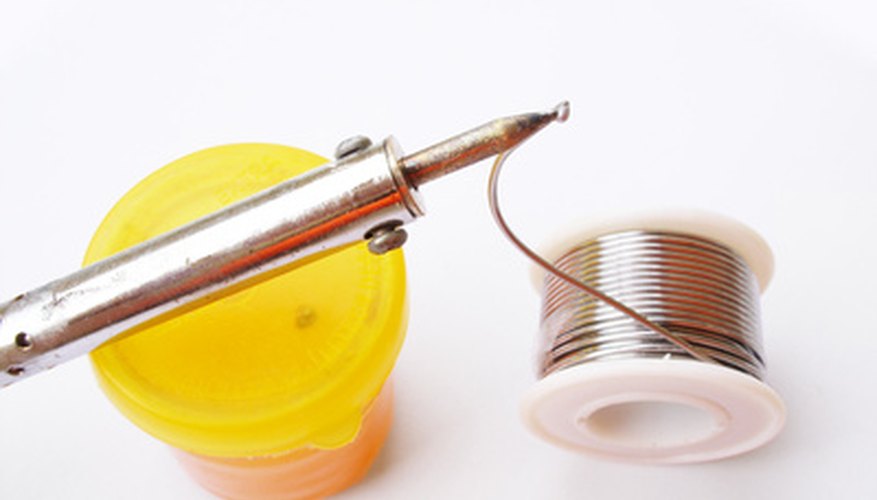Soldering spade connectors is a way to ensure a proper wire connection that is durable and professional. Most spade connectors come ready to be soldered, and all you need is a soldering iron and solder wire to transform a basic crimp connection into a permanent one.
Strip the wire being used for the connection by pulling off the protective covering, exposing one half of an inch of bare wire. Twist the wire until is spirals together. Slide a piece of heat shrink tubing onto the wire and pull it away from the exposed area a few inches. Use the soldering iron to heat the twisted exposed wire.
- Soldering spade connectors is a way to ensure a proper wire connection that is durable and professional.
- Strip the wire being used for the connection by pulling off the protective covering, exposing one half of an inch of bare wire.
Put some solder on the tip of the soldering iron and allow it to melt until it looks like a bead of mercury. Rub the liquid metal onto the bare wire until it covers the entire surface. Ensure the entire bare wire area is covered with a thin coat of solder.
Hold the spade connector with a pair of needle-nose pliers. Heat the wire receiving end of the spade terminal with the soldering iron for approximately two minutes. Quickly slide the wire into the spade connector and use the needle nose pliers to slightly crimp the connector to hold the wire into place.
- Hold the spade connector with a pair of needle-nose pliers.
- Quickly slide the wire into the spade connector and use the needle nose pliers to slightly crimp the connector to hold the wire into place.
Place the solder into the open end of the spade connector and use the soldering iron to heat and drip small beads of solder. Do not allow the solder to overflow and drip out of the connector, just allow a few beads to ensure a solid connection. Allow the connection to sit for five minutes. Slide the heat tube over the connection area and use the centre of soldering iron to heat and shrink the tube on the connection.
TIP
Use resin core solder. Other types of solder are available, but resin core solder is generally used for electronics because it provides good electrical conductivity and won't corrode like other solders.
WARNING
Soldering irons reach extremely hot temperatures. Be careful not to touch the tip of a soldering iron to anything but the intended work area. Use the soldering iron base when the iron is not being used. Resin core solder is toxic when inhaled. Solder in a well-ventilated area, and wear a mask and eye protection.
